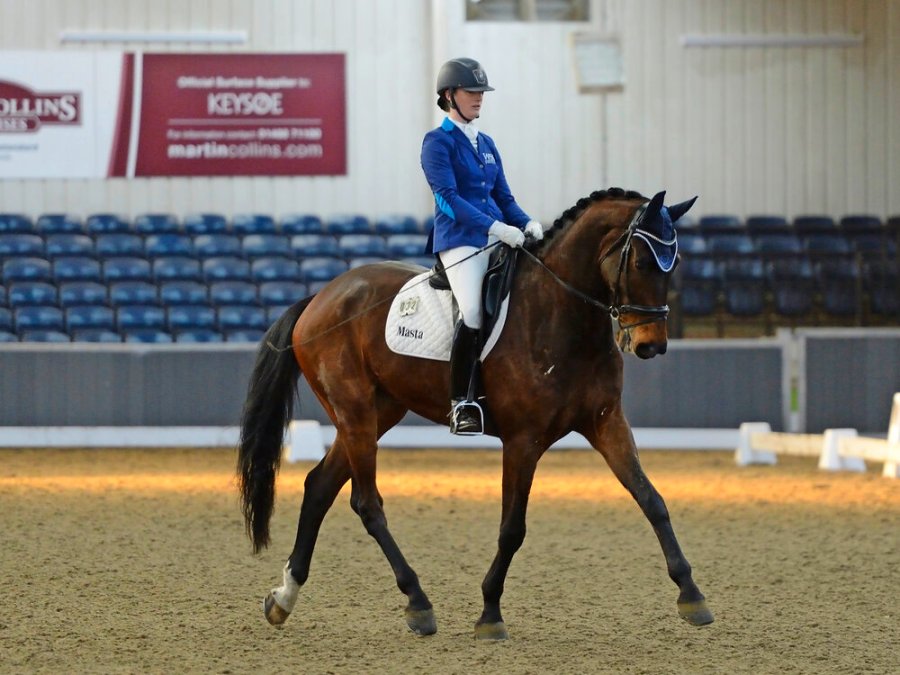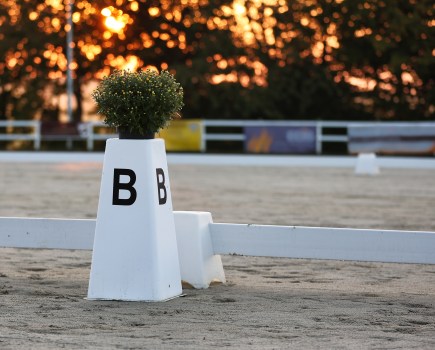Freestyle expert Kelly Jewell shows you how to put together a winning freestyle routine.
Remember the stir created by the ‘dancing horses’ at the 2012 London Olympics? The nation couldn’t get enough of them, giving the sport of dressage just the boost it needed.
If you’ve not yet given dressage to music (also known as freestyle) a go, make now the time. It’s so liberating as a rider, as you can get creative, designing your own floorplan and choosing the music too.
The difference with freestyle
“With dressage to music, you don’t have a set test to follow. Instead you create one yourself from scratch,” explains Kelly.
Now this doesn’t mean that you can go feral as there are a number of compulsory movements to include (and some not to). The key is to get clever and ensure that your test plays to your horse’s strengths.
“Design a test which helps you to show off your horse’s training relative to the level he’s currently at,” Kelly adds.
When you start to plan your dressage to music debut, the first thing you need to do is get your floorplan sorted, and it can pay to get expert help with this.
Floorplan first, music later?
There isn’t really a right or wrong answer to this as it comes down to personal preference.
“From a music producer’s perspective, we can be far more accurate annotating a pre-recorded floorplan, as we can get the timings down to the second and also add cool features to extenuate mediums and lateral work,” explains Kelly.
“Any rider can devise their own test and music, but my personal feeling is that with the level of music production available today, it will never sound quite as tight as a piece of music that has been crafted and essentially shrink wrapped to fit the exact components of the test.”
All about the floorplan
When you start to create your floorplan, make sure that you check what elements you must include and those you simply can’t. British Dressage and British Riding Clubs will have the information you need.
“For example, at novice level you must ride a 20m circle in canter on each rein, a 15m trot circle on each rein and show some medium strides (not a finite list),” says Kelly. “You’re not allowed to ride lateral work, piaffe/passage, or direct canter to walk transitions no matter how good your horse is at them”.
Be aware that there is a minimum and maximum time allowed for each test too.
“When we design a floorplan we use a specialist who will either work with the rider in a lesson scenario, or chat remotely about their strengths and their horse’s, and look at areas that need improvement. They will then design a plan to show off the combination at their very best.”
Rock at home
Schooling to music at home is a fantastic way to help develop rhythm and also get a feel for how your training is coming along. With music, a trot will usually develop more lift and suspension and the tempo will slow as you progress.
It’s a good idea to check the tempo regularly — canter and walk are often quite consistent, but the trot will change. Music is also a wonderful way to create a peaceful training environment — or, alternatively, to ramp up the energy levels.
Mastering your music
“The choice of music is based partly on personal preference, but mostly on the tempo of each gait and the feel of the genre of the music,” explains Kelly.
Consideration needs to be given to whether your horse suits something light and dance-like or big and powerful. Then it’s down to you. Violins or a modern beat sound? Orchestral or synths? Rock, pop, or theme tunes from the movies?
“Once we know the feel of the piece the rider has in mind and the types of artists/genres they prefer, an arrangement can be crafted,” says Kelly. “We can do this in a multitude of different ways and create different feels. One song can have a variety of versions that change the ambience of the arrangement. It can be fun, dramatic or emotional — it’s all down to how the rider wants to feel and how it suits the horse and rider combination.”
Feel the beat
Tempo is crucial. There are average ranges for each pace, but every horse is different, so to create a really effective music accompaniment you need to know the exact timing of your horse’s paces.
“Download the app Tap That Tempo as this allows you to tap the tempo of your horse’s paces,” says Kelly. “You can then use it to tap along to your favourite music and see if the two match up.
“Think about whether the groove of the music is right. The best way to find out is to play the music alongside a video of you riding your floorplan and see if it gives you the vibe you’re looking for.”
Don’t miss the latest issue of Your Horse Magazine, jam-packed with training and veterinary advice, horse-care tips and the latest equestrian products, available now.









